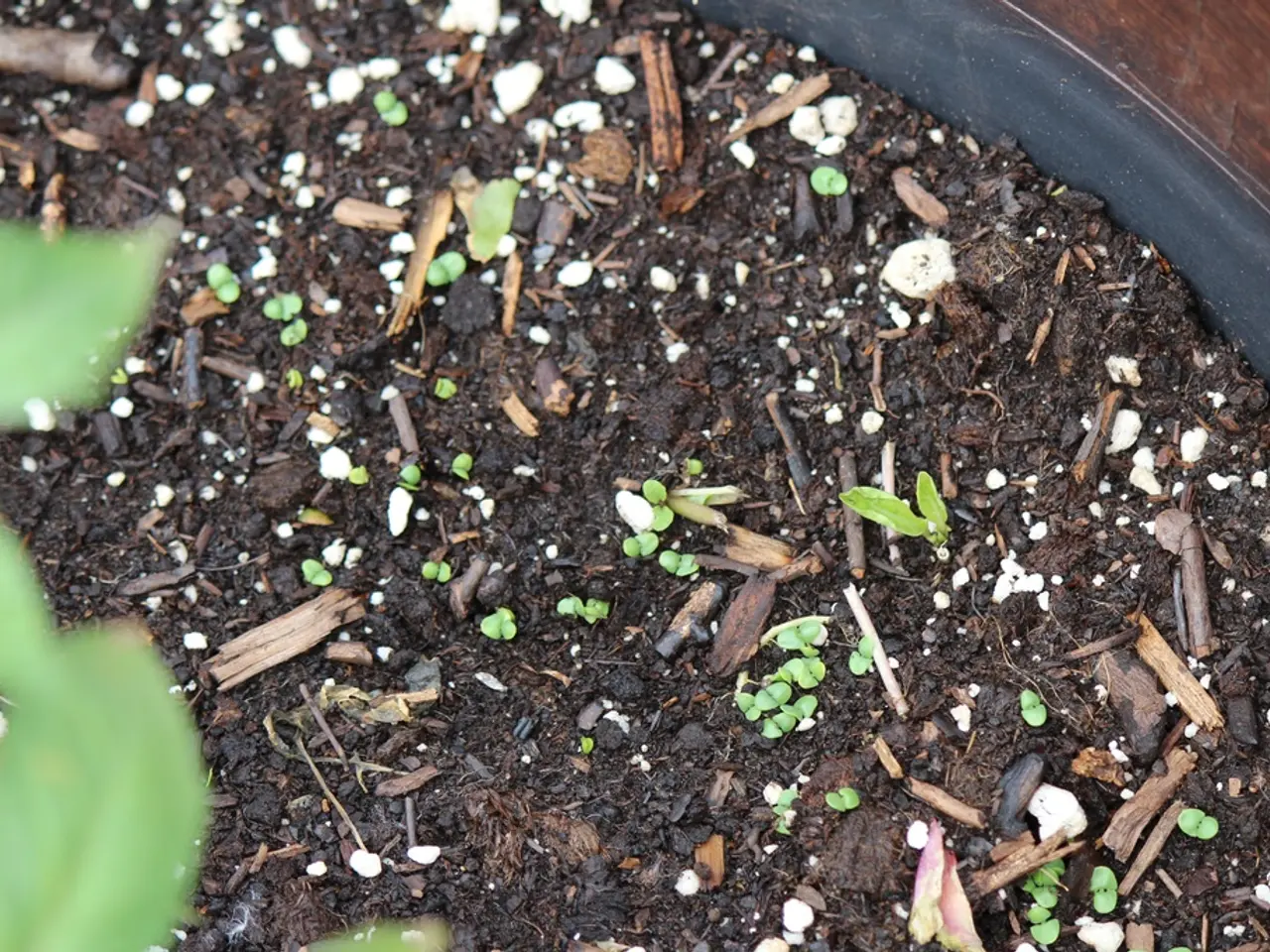Improving Soil Surrounding Established Plants: Boosting Garden Vibrancy through Cultivation Care
A flourishing garden begins with nurturing the soil, the foundation that supports plant life. The composition of the soil, which includes texture and structure, organic matter, and proper pH and nutrient levels, plays a crucial role in the health of plants.
Poor soil can become compacted and nutrient-depleted, but with the right amendments, it can be transformed into a rich, well-draining, nutrient-filled medium. A careful, methodical approach to amending soil around established plants rewards you with thriving plants and a vibrant garden for years to come.
Topdressing with Organic Matter
For gardens with established plants, applying amendments such as well-aged compost, peat moss, or organic mulches evenly over the soil surface around plants is an effective method. This approach avoids disturbing roots and allows nutrients and organic matter to slowly integrate into the soil over time.
Mixing Amendments into the Top Soil
If plants are young or root disturbance can be minimized, gently mixing amendments like peat moss or compost into the upper soil layer (6–12 inches) helps improve aeration, moisture retention, and nutrient availability. For example, peat moss is often mixed at a ratio of about one part peat moss to two parts soil.
Maintaining Soil Life
Employ amendments such as well-aged compost, biochar, mycorrhizal fungi inoculants, and organic mulches to foster a healthy soil microbial ecosystem that supports nutrient cycling and root health.
Timing
The ideal times for soil amendment are in the fall and spring. Fall applications allow organic matter to break down over winter, improving soil structure and fertility by spring. Spring amendments prepare the soil for the growing season. Additionally, light topdressing with compost during the growing season can provide mid-season nutrient boosts.
Mulching Around Plants
Applying organic mulch such as straw or shredded leaves around existing plants conserves moisture, suppresses weeds, regulates soil temperature, and adds organic matter as it decomposes.
pH and Nutrient Testing
Test soil pH and nutrient levels annually or before planting. Amend soil pH if needed using elemental sulfur or acidic organic materials for pH adjustment. Amend nutrients based on test results to avoid deficiencies or imbalances.
In summary, to amend soil around existing plants, use non-invasive topdressing with organic amendments and mulches, time applications for maximum benefit, maintain soil biology, and monitor soil health regularly. This approach helps maintain root health and fosters a productive garden environment.
Glen, an experienced gardener with over 15 years of hands-on experience in garden maintenance, design, and landscaping services, shares his expertise through regular posts. His latest include "Garden Fungicides: Essential Tips for Disease-Free Plants", "When to Pick Candy Cane Peppers: Optimal Harvest Time Guide", and "When to Pick My Watermelon: A Gardener's Guide".
Remember, soil quality plays a significant role in the health of plants. Understanding the state of the soil before amending it is important, considering factors such as soil type, pH, and the existing nutrient profile. Regularly adding organic matter is vital for maintaining and improving soil fertility and structure over time.
Soil pH can greatly affect plant growth; it influences nutrient availability and soil bacteria. Clay soils, while retaining moisture, may impede root growth and drainage, while sandy soils ensure good drainage but may struggle to hold nutrients and water. Silt is a medium-textured soil, often rich in nutrients and good at retaining moisture. Loam, a balanced mix of these three, is considered the ideal garden soil.
When fertilizing, it's crucial to scatter the fertilizer evenly and gently incorporate it into the surrounding soil without disturbing plant roots or making direct contact with plant stems and foliage.
By following these best practices, you'll be on your way to a thriving garden, filled with healthy, vibrant plants. Happy gardening!
Incorporating organic matter like well-aged compost or peat moss in your home-and-garden through topdressing or carefully mixing it into the top soil layer can help improve soil quality, fostering a better lifestyle for established garden plants by enhancing aeration, moisture retention, and nutrient availability.
Mulching your home-and-garden with organic materials such as straw or shredded leaves around existing plants will protect the soil, conserve moisture, suppress weeds, regulate soil temperature, and slowly add organic matter that can benefit the health of your plants over time.




